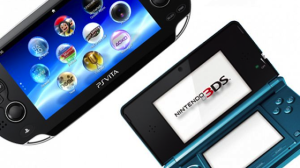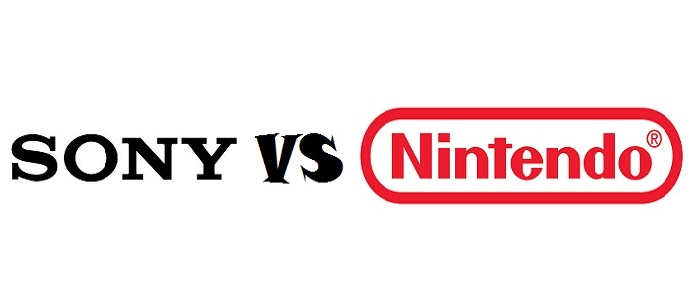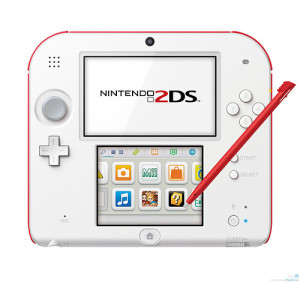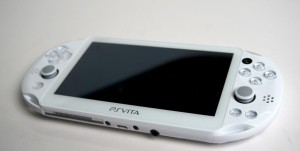Clash of The Handhelds: PS Vita Slim Vs. Nintendo 2DS
Handheld gaming has been undergoing something of a transformation in recent years. As sales for Nintendo’s legendary DS system peaked somewhere in the late 2000s, the handheld market has struggled to retain its relevancy in a mobile arena that has become increasingly dominated by tablets and smart phones. Lackluster sales of Sony’s Playstation Vita console did little to revive attitudes amongst consumers and has, by and large, been eclipsed by the rather more familiar embrace of the Nintendo 3DS. The allure of handheld gaming has waned and both Sony and Nintendo hope to revitalise their fortunes in this area by focusing on the specific and altogether unique features of their hardware that make other configurations of handheld gaming appear comparatively lifeless.
With the next generation of home consoles now firmly out the door, both Sony and Nintendo are approaching the handheld market with a renewed sense of optimism. Nintendo has pursued a more budget-constrained approach by re-releasing their 3DS as the Nintendo 2DS. Retaining many of the same features that made the 3DS and – more accurately – the DS so popular, the 2DS boasts a child-friendly design (the 3DS being off-limits to under-sevens) and an emphasis on affordability. The downside is that its very existence downplays the underlying appeal of its predecesssor, namely its 3D functionality. Nintendo have made the rather unusual decision to scrap the sterescopic display in favor of a more streamlined experience that employs the main appeal of a Nintendo handheld – the games.
Boasting some of the greatest handheld titles available on the market today, such as Pokemon X & Y, Animal Crossing: New Leaf and Luigi’s Mansion 2, Nintendo’s 2Ds and 3DS consoles have access to a wide range of premium Nintendo games, as well as a vast back catalogue of titles provided courtesy of its predecessor, the DS. In terms of variety and enjoy ability, Nintendo games remain unbeaten and Sony has a serious uphill struggle to contend with if it ever hopes to unseat its main rival.
Every game currently available for the 3DS can be played on the newer 2DS, with most of the signature features and dual screen interactivity available to gamers on both systems. The core elements of the handheld are still there, but the absence of 3D functionality and a noticeable downgrade in audio quality (the dual speakers of the 3DS have been replaced by a distinctly quieter monaural output) makes the potential pros of the 2DS somewhat bittersweet.
Additionally, although perhaps comforting, battery life and screen size remains comparable to what was found on the original 3DS model from 2011. Strangely, Nintendo has once again ommited the second circle pad from the design but has seen fit to address player concerns about the handheld’s troublesome weight issues and rather irksome shoulder button layout. The 2DS is noticeably lighter overall which is owed to its new plastic chassis and the more even distribution of weight across the system.
Sony, however (reinvigorated by sales of the Playstation 4), remains confident in the PS Vita’s appeal and has unveiled its first reiteration of their handheld design in the form of the PCH-2000, or PS Vita Slim to you and me. Boasting a shiny new makeover, the PS Vita Slim clearly intends to capitalize on the widespread popularity of the Playstation 4. Also the much anticipated ‘Remote Play’ feature of the PS Vita has peaked consumer interest in this oft maligned handheld.
In contrast with Nintendo, the folks at Sony have adopted an altogether more reserved approach for the new design of the Vita Slim, instead opting to improve some of the basic aesthetics of the system. For starters, the OLED display of the original PS Vita has been replaced with an LCD screen, affording the new system a slight difference in image quality. It might be easy to describe this as a downgrade from the original but, in truth, the PS Vita Slim manages to retain the same level of picture sharpness that made the original OLED display so appealing. Colours can appear a little washed out by comparison on the Vita Slim but I found the pros and cons of either can be attributed to a matter of personal taste.
I also discovered that many of the design nuances from the PS Vita have disappeared, presumably to accommodate the Vita Slim’s more svelte chassis. For instance, the PlayStation symbols that once proudly adorned the rear of the handheld have been replaced by a series of inconsequential dots. On the plus side of things, the button and analogue stick layout will remain familiar to anyone who has played the original Vita design, barring a few visual changes here and there such as the Select and Start buttons, which have been enlarged.

Whether Sony and Nintendo can stave off fierce competition from the tablet games market is yet to be determined
Similar to the Nintendo 2DS, the PS Vita Slim comes equipped with 1GB of internal storage. Unfortunately, although suitable for save data, the lack of any substantial internal memory means downloading the vast majority of premium PS Vita games is out of the question until the memory has been upgraded. Whilst on topic; the issue of games for the Vita is, to be quite honest, where the system falls spectacularly short when compared to its main rival, the 2DS. Aside from the rare exception, such as Tearaway and Killzone: Mercenary, the PS Vita lacks any major stand-out titles. I suspect Sony has experienced difficulty attracting third party support to the new system, especially when you consider its underwhelming sales thus far. Many of Sony’s own studios are no doubt prioritising games for the PlayStation 4 at the moment and have found limited opportunity to test their mettle with the PS Vita.
Fortunately for Sony, ‘Remote Play’ is where the system’s holy grail truly lies since this feature was heavily marketed during the run up to the launch of the pS4 last year. Essentially, this feature enables players to enjoy PS4 or PS3 games on the PS Vita handheld, similar in many ways to the off-play functionality of Nintendo’s Wii U console. Once Playstation Now is introduced later this year Sony hopes to expand the range of games available to Vita users via the benefits of cloud-computing.
When it comes down to it, it’s software that drives hardware. Sony has certainly made some impressive gains since the debut of PlayStation Portable, acknowledging where its strengths and weaknesses lie within the handheld market. First party titles are key to the success of any handheld device, something Nintendo knows all too well, but Sony seems reluctant to focus attention away from the PS4 at this stage. The 3DS (and 2DS) has the benefit of a secure audience, who know and appreciate the typical lineup of Nintendo titles, as well as an unceasing barrage of excellent first party support. In the end, both systems have their advantages and disadvantages. The 2DS has a greater and ongoing lineup of games available (right now) and play sessions are much more digestible over short bursts, whereas the PS Vita Slim is constrained by a limited catalogue of ‘must have’ entries. Nintendo knows this landscape well and has worked tirelessly to get its handheld moving in the right direction since its shaky launch. Unfortunately, Sony has failed to follow suit in this regard which, for now, relegates the PS Vita (and PS Vita Slim) to little more than an accessory for those who own a PlayStation 4.





